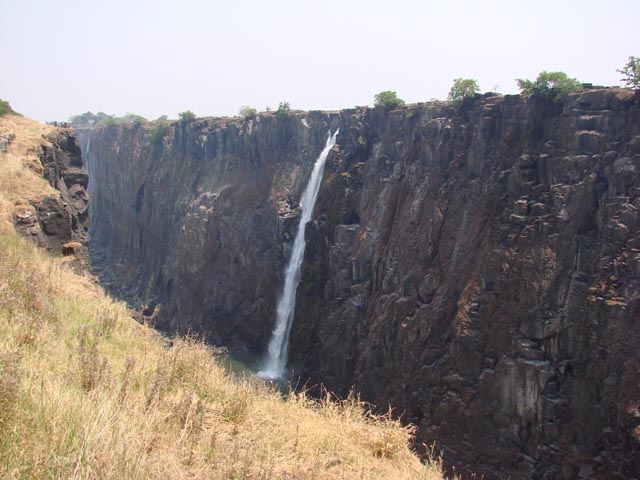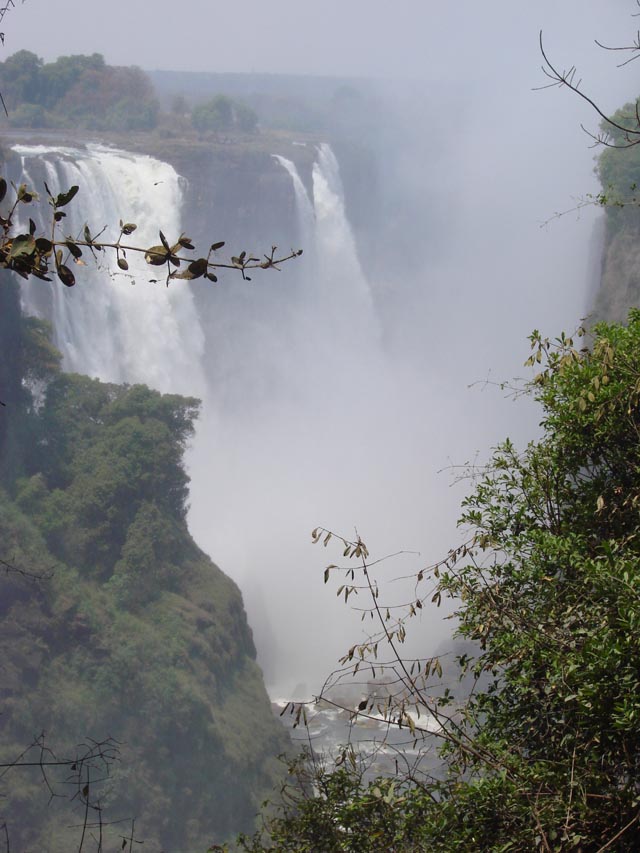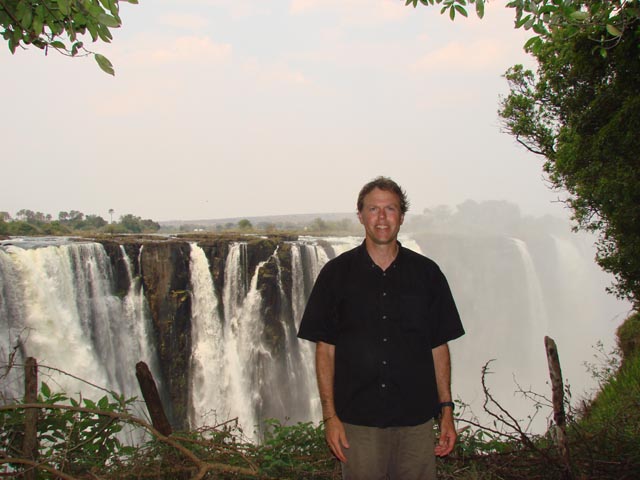
I arrived in
I stayed in Livingstone for several days. Livingstone (map location) is known as the
My main reason for stopping in Livingstone was Victoria Falls, only 10 km away. It’s considered one of the natural wonders of the world, with a height of 100 meters (about 300 feet) and a width of 1.7 km (over a mile) of continuous flowing water. To aid in viewing, the falls are a "slot canyon" and there is a headland right in front of the falls to hike and view the water up close. To my disappointment, I found the falls were dry rock walls where water should have been. It was the dry season. During the rainy season (spring), most people rent raincoats for their viewing and keeping your camera dry is a problem. An English lady who had been to the falls before during the wet season said to me “Just imagine a wall of water 1.7 kilometers across.” Imagine, indeed.
Well, something to look forward to for a return trip to Africa.

As I walked along the hiking trails in the park, I saw mist
and a rainbow in the distance. That was the southern part of the falls, which
are in

Victoria Falls on the Zimbabwe side
I walked out of the
 LyNQHEos
LyNQHEos
Finding water in the dry season in Victoria Falls, Zimbabwe
There are multiple national parks all around Livingstone, so
I booked a safari to the nearby
During the early morning, we started with a boat safari on
the

Zamibia was in the midst of a presidential election and after more than a week after the voting had closed, a winner had not been declared. The incumbent candidate had claimed victory, and his challenger claimed a rigged election by the government. There were riots in Lusaka, the capital city, with rock-throwing and teargas, but this stopped the day before I arrived. The incumbent president was declared the winner.
I got a bus from Livingstone toAs we were going down the road in the hot afternoon sun, we
came upon a bus that was broken down. This bus had come from
When he did that, the officers told him he had to pay a fine for each passenger in our bus who didn’t have a seat. Our driver didn’t have the money, since the extra passengers had not paid yet – so they threw him in jail!!!
Our bus was not going anywhere with our driver in jail. It sat parked on the main street of a small town for several hours. This town was so small I had a hard time finding a store that sold soda. I didn’t want to get too far away from the bus, when my luggage was still inside and the departure was unknown.
After 3 hours, the police finally decided to allow our
driver to pay the fine sometime in the near future at a police station of his
choosing. We were back on the road. A few hours later we heard a loud explosion
from the rear of the bus and we stopped again. The rear tire had blown, but on
this rear axle, there were two tires and this was the inside tire. The outside
tire had to be taken off first. A problem – it was night and there was no
lighting for the repair work. The crew had no flashlight and none of the 70 or
so passengers had a flashlight – except me. My flashlight was summoned for the
repair work and I felt I was really contributing. This repair took over two
hours to accomplish. Then we were back on the road. We rolled into
I didn't really find much to do in Lusaka and the flat topography prevented any significant views of the city. I decided to get a bus out of town - another long bus ride.